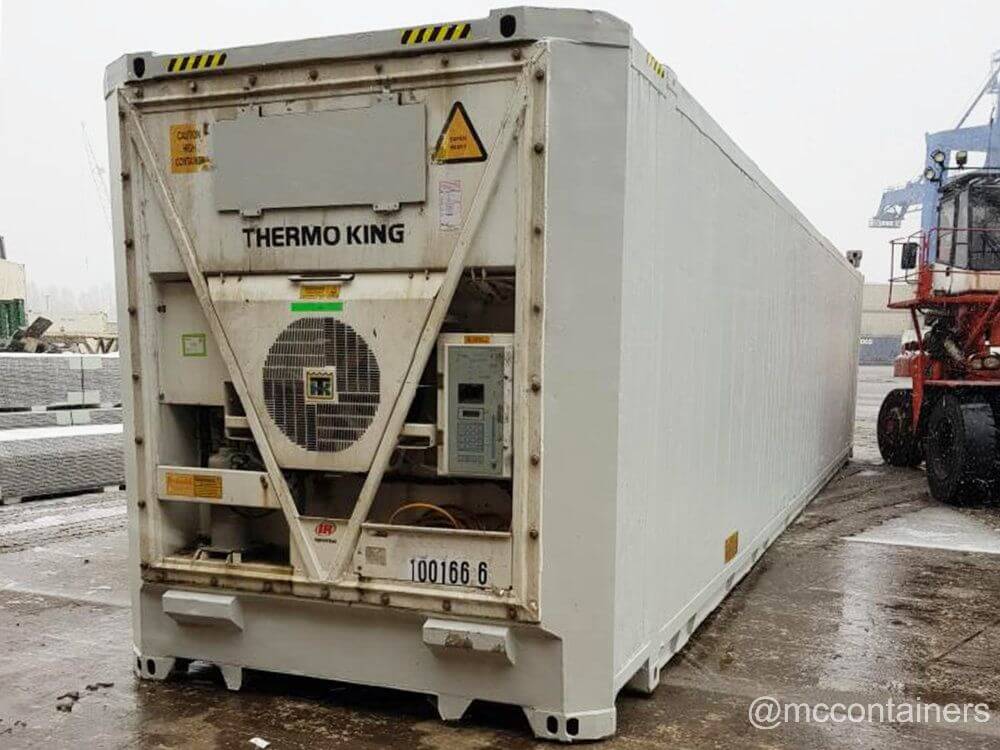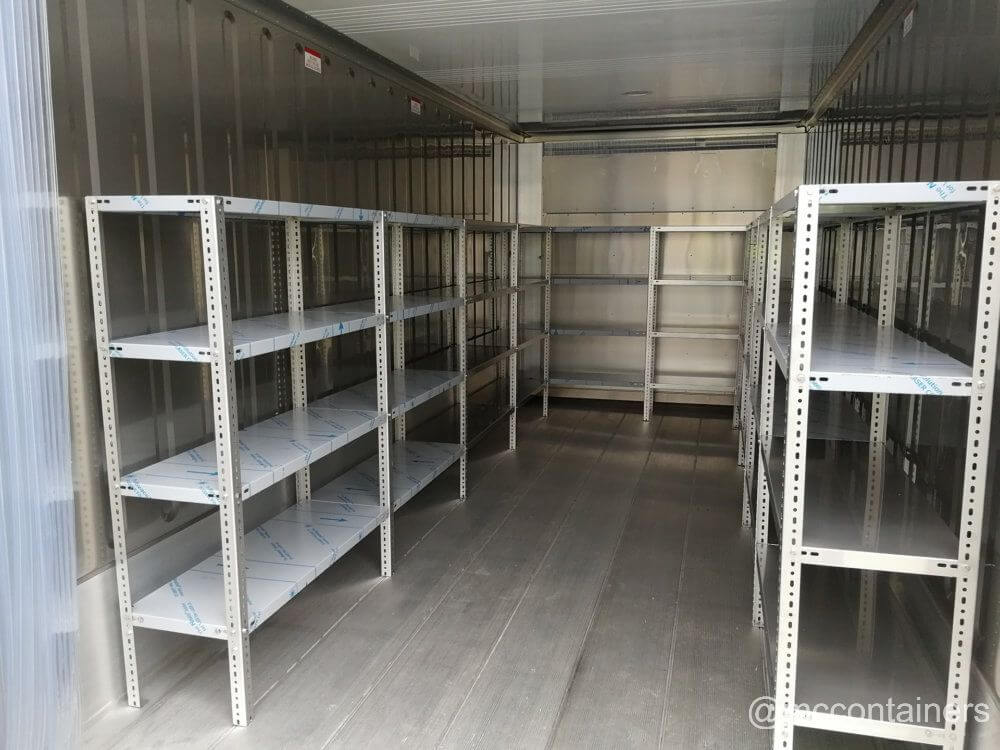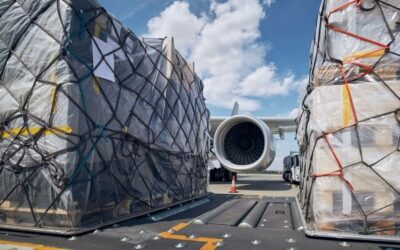The in-Depth Guide to Reefer Container – Types, Specifications & Sizes
Table of Contents
With distances reduced and demands increased, the modern world’s logistics industry offers modern solutions to cope with modern problems. One of the amazing solutions includes the reefer container.
A reefer container is a short form for the refrigerated container, which is one of the six types of shipping containers in the logistics industry. Reefer containers are huge fridges to ship temperature-controlled cargoes providing
- Controlled Atmosphere
- Cold Treatment
- High quality and safety for pharmaceuticals shipping.
Reefer containers maintain the Cargo at the necessary temperature normally between – 30°C and +30°C during the transit at a cold, chilled or controlled temperature. Over the long journeys, the latest technologies have made reefers more proficient.
Basically, these containers are utilized for shipping food items like fruits, meat, fish, yoghurt, ice-cream, vegetables, dairy products etc. Furthermore, non-food items, are also transported through oceans to different parts of the world for example,
- Pharmaceuticals
- Flowers
- Films, etc.
Also Read
| Open Top Container | Hard Top Container |
| Platform Container | Insulated Shipping |
| Flat Rack Container | Pallet Wide Containers |
| Intermediate Bulk Container | Ventilated Container |
| Dry Container | Tank Container |
Construction:
Before jumping on to how it works, let’s understand the reefer container’s electrical specifications. The control unit on the container monitors the setting and change of figures, for example, temperature, humidity, ventilation and environment. The unit includes
Genset:
To facilitate the container with electricity for cooling a generator or Genset is attached to the Reefer. It is used for both ocean and land shipping.
Humidity controls:
To control the moisture levels in the Reefer, automatic humidity controls are installed which open and close the container to release excess water accumulated water inside the container.
In such cases, the drains prevent the outside water from coming in and maintaining the inner atmospheric moisture to prevent the air from drying as this too can also damage the fruits and vegetables.

Information Loggers:
To ensure the moistness is spot on, information loggers are being utilized to monitor air temperature, return air temperature, and surrounding temperature and moisture level persistently because of distant modems.
Working:
With one or two additional things, the cold Cargo transit follows the normal pattern as the ordinary shipment.
Reefer containers circulate chilled air from the floor as they have air distributing units at the bottom. The chilled air is delivered through a T-molded decking, producing an airflow that is uniform and consistent throughout the whole transit, ensuring ideal conditions for the goods inside the container.
Refrigerated units can keep up or lower down your shipment temperature, even in the most unfavourable conditions.
Wait! Is that all that they do?
This may come to you as a surprise, but reefer containers are additionally designed to heat the products when needed, with the capacity to sustain temperatures up to 30°C when required, no matter what the temperature conditions are outside the container.

Scope and Popularity:
According to an expert, the only things creating hurdle in its popularity are the lag of manufacturing, geopolitical risks and cybercrime.
The demand for reefer containers has increased exponentially over the past few years. It is still increasing, so let’s discuss essential information on how reefer containers operate, how the temperature control and environment control work and how you can benefit from them.
Why We Need Reefer Container?
You may be wondering why to go for them?
The answer is quite simple; Some cargoes need special conditions to be transported to avoid any compromise on the quality or safety of the products. For instance, controlling the CO2 and O2 levels in a container containing natural products can extend the ageing cycle, permitting it to be saved from staling and reefers do that for you.
Some goods are required to be sent chilled or solidified or in controlled temperatures. Reefer compartments can keep the Cargo at the necessary temperatures during the transit.
Besides that, there are some other benefits too:
Benefits of a Reefer Container
- Having self-sufficient cooling units, they don’t need cold storage upon their arrival at the destination.
- They are accessible in different sizes and dimensions, making them appropriate for all types of transportation, including land, ocean, and air.
- They can be divided to make various portions and spaces at various temperatures to facilitate a safe transit for frozen and chilled products in one container.
- They are considered to be strong and reliable.
But as there are reasons to fancy them, there are also reasons to dislike them. It has been proven that these containers cause global warming as they emit harmful gases that are dangerous for our environment.
No need to get worried, though, as, with the recent sustainable drives by different countries, techniques are being worked upon and developed to make their transit and operation eco-friendly.
Point to note!
One thing to keep in mind is that the reefer container can only maintain the previously cooled products’ temperature and can’t lower the temperature on its own.
Common Heights of Reefer Container
The refrigerated container comes in various sizes and technological applications, yet almost each of these containers is 20ft. Identical units (TEU) which is the standard size for shipping containers. The measurements of reefer containers can differ depending upon
- the manufacturer
- the age of the container
- the owner of the container.
Below we have discussed the reefer containers’ specifications that represent most of the reefer container types.
| | Tare Weight (kg) | Payload Capacity (kg) | Cubic Capacity (m3) | Internal Length (m) | Internal Width (m) | Internal Height (m) | Door Opening Width (m) | Door Opening Height (m) |
| 20’ reefer container | 3,080 | 27,400 | 28.3 | 5.44 | 2.29 | 2.27 | 2.23 | 2.10 |
| 40’ reefer container | 4,800 | 27,700 | 59.3 | 11.56 | 2.28 | 2.25 | 2.29 | 2.26 |
| 40’High cube reefer container | 4,480 | 29,520 | 67.3 | 11.58 | 2.29 | 2.40 | 2.29 | 2.57 |
| 45’ reefer container | 4,850 | 29,150 | 67 | 11.57 | 2.27 | 2.55 | 2.29 | 2.26 |
For your convenience, we have also discussed the reefer dimensions in lbs and ft scale.
How can you Use Reefer Container to Manage Cargo effectively?
The packaging and mode of loading impact the flow of air so there are some prerequisites that must be followed. Usually, frozen and chilled Cargo are placed separately due to temperature difference.
You may still stumble at some confusions like:
What if the temperature is not maintained?
Air circulation inside the container is necessary to maintain the recommended temperatures. There is a minimum endurance level in temperature change. If it exceeds, then extra hours or days will be needed to bring it to the required temperature.
If you fail to maintain the temperature, then the shipment can be rejected due to the possibility of pathogen presence in the products.
Is it same for chilled and frozen Cargo?
The airflow necessities of every product fluctuate. For instance, for chilled freight, air needs to flow through the freight consistently to eliminate the heat, so the cartons ought to have ventilation.
For chilled Cargo
- airflow for removing heat and gases
- cartons must have ventilation as the heat can arise in the container from internal as well as external sources.
In the case of fresh edibles like fruits and vegetables, the water, respiration gases and heat need to be removed for them to stay fresh.
- For frozen freight air needs to flow around the Cargo,
- there should be no space between the Cargo and the walls and between the Cargo itself.
- Only the external heat coming from the outside or originating from the fans need to be removed and not the internal heat.
- Why is it necessary to maintain atmospheric pressure and temperature control?
They are particularly significant for fresh fruits and vegetables due to their constant respiration process which produces water and gases, including carbon dioxide and ethylene which if not controlled, can damage those products. The damages can include
- uncontrolled ripening
- ageing and staling
- flavour staling
That is the reason each Reefer is equipped with a fresh air ventilation system that eliminates gases from the container to decrease the possibility of product damage.
What is a Steri Shipment?
Because of some organic product types with microorganisms in them, countries like China, Japan, Nigeria, require a cold treatment, also known as Steri shipments to import such items. If everything goes well, the shipment can be received ready to eat and ready for further storage if needed.
How is it done?
For these shipments, the organic product will be pre-cooled to a lower temperature and screen, steri tests, around three for each shipment are embedded into the pulp of the organic product, inside the container.

Helpful tips:
To make your shipment efficient, we have concluded this article with some tips for you.
- Cargo should not be filled beyond the space of the T-floor
- Cargo should not be placed over the red burden line.
- Cargo must be steady on the floor and firmly wedged, so it doesn’t move during the transit.
- The unit should consistently be set at the correct shipping temperature, and this adjustment of temperature will fluctuate as indicated by the freight being loaded.
- Dehumidification commands must be followed.
- Power off the unit during loading to prevent airflow inside
- Guarantee products are uniformly loaded in the right way.
- Prevent poor airflow which is harmful to the products
- Any free floor zone and spaces may not surpass 5% of floor zone to evade negative effect on air circulation.
- Sufficient refrigeration depends on great air circulation around your whole freight.
- After loading close doors carefully.
- Guarantee right set point for shipping temperature, humidity and setting of air ventilation
- If pre-cooling is required, the freight is pre-cooled and not the container, except if the container is loaded in a cold tunnel in the cold storage.
- Ventilation setting plays one of the most significant roles and must be adjusted at the right level.
- As air will follow the easiest course of action, there should not be any limitations for airflow, and any holes between the pallets and the entryways must be shut with cardboard or even wood. This will, at that point, power the air to circulate accurately and decrease the potential for heat sinks near the doors.






